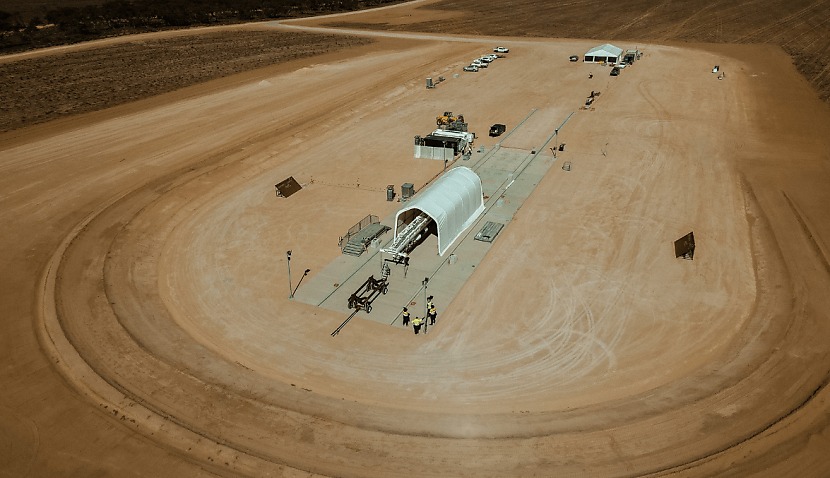
Reaction Dynamics believes its RE-102 hybrid rocket engine is cheaper and more reliable than traditional fuelled boosters because its fuel is solid and non-toxic.
It comes after the South Australian-based spaceport successfully blasted off a German rocket in May – its first launch since a major upgrade to the facility.
Next year’s suborbital launch will see the two-stage, seven-metre-tall Aurora vehicle reach an altitude of 125 kilometres above Earth, providing the team with critical data. It will also lift off using Southern Launch’s Mid-Range Launch Rail, which is stored onsite.
“We believe that the RE-102 hybrid rocket engine will be the most efficient hybrid rocket engine in the world,” Reaction Dynamics CEO Bachar Elzein said.
“Extensive hot fire tests have shown that the engine is able to maintain performance during prolonged burn periods thanks to our patented innovations.
“We are eager to put this technology to the test in the vacuum of space during our upcoming suborbital mission from the Koonibba Test Range.”
Southern Launch CEO Lloyd Damp said his spaceport exists to help companies like Reaction test breakthrough technology.
“We are proud to be hosting the Aurora suborbital mission from the Koonibba Test Range,” he said.
“This mission will test a novel hybrid propulsion system which will ultimately result in technological breakthroughs that will propel the entire space industry forward.”
It comes after Space Connect reported earlier this year how Southern Launch signed a deal with a South Korean rocket manufacturer to host at least four blast-offs per year starting in late 2025.
The agreement will allow Unastella to iteratively test and launch a small lift rocket that will pave the way for it to eventually develop a larger crewed rocket and spaceship.
Space Connect understands the deal will allow blast-offs from both Southern Launch’s two spaceports in SA.
Koonibba – a joint venture between the launch firm and the Koonibba Community Aboriginal Corporation – is designed to test rockets and payloads by blasting them into suborbital space before they return to Earth in the same location.
The more traditional Whalers Way Complex at the tip of the Eyre Peninsula, meanwhile, specialises in orbital launches over the sea.

Adam Thorn
Adam is a journalist who has worked for more than 40 prestigious media brands in the UK and Australia. Since 2005, his varied career has included stints as a reporter, copy editor, feature writer and editor for publications as diverse as Fleet Street newspaper The Sunday Times, fashion bible Jones, media and marketing website Mumbrella as well as lifestyle magazines such as GQ, Woman’s Weekly, Men’s Health and Loaded. He joined Momentum Media in early 2020 and currently writes for Australian Aviation and World of Aviation.
Receive the latest developments and updates on Australia’s space industry direct to your inbox. Subscribe today to Space Connect here.









